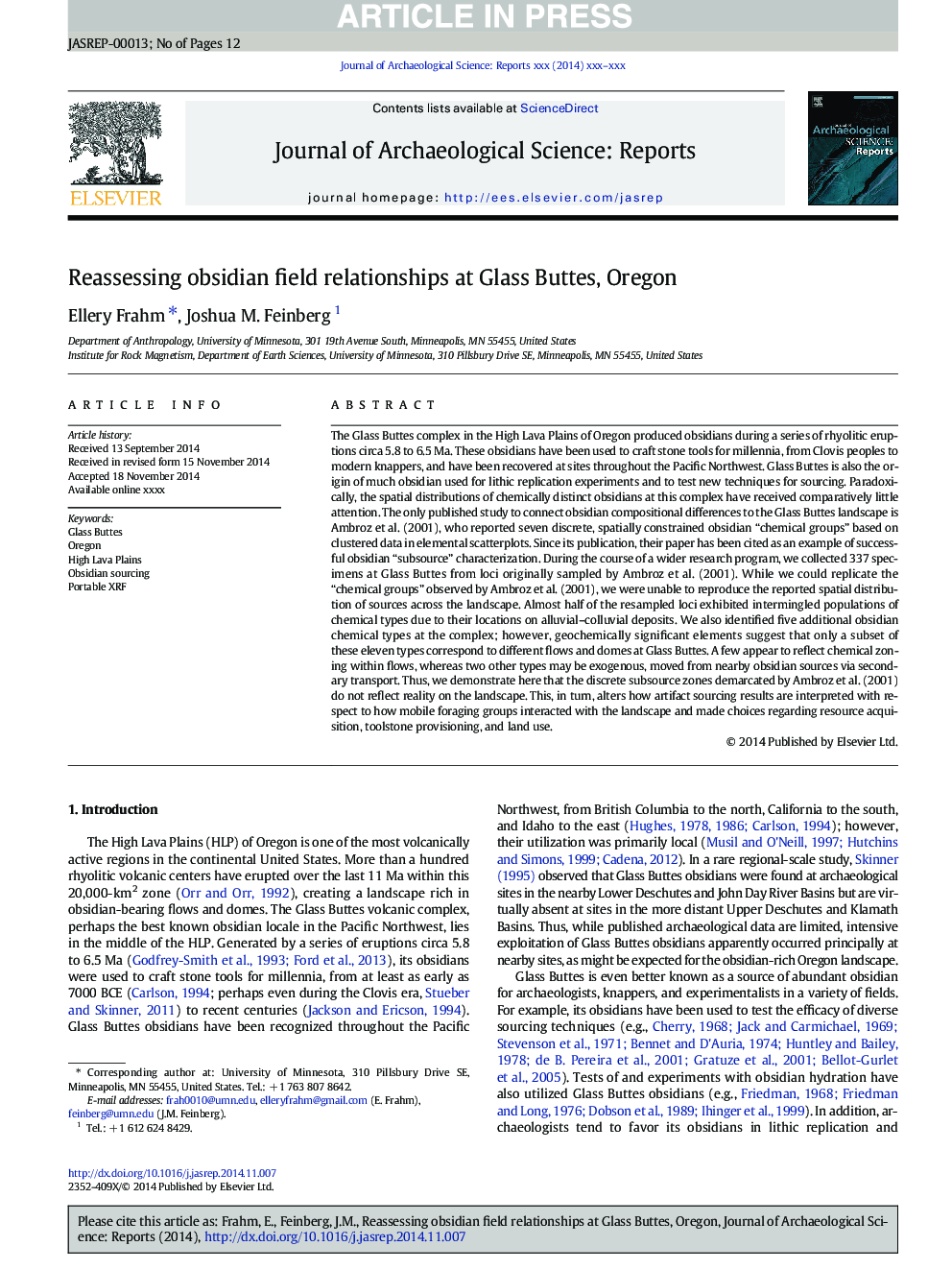| کد مقاله | کد نشریه | سال انتشار | مقاله انگلیسی | نسخه تمام متن |
|---|---|---|---|---|
| 7446628 | 1483941 | 2015 | 12 صفحه PDF | دانلود رایگان |
عنوان انگلیسی مقاله ISI
Reassessing obsidian field relationships at Glass Buttes, Oregon
دانلود مقاله + سفارش ترجمه
دانلود مقاله ISI انگلیسی
رایگان برای ایرانیان
کلمات کلیدی
موضوعات مرتبط
علوم انسانی و اجتماعی
علوم انسانی و هنر
تاریخ
پیش نمایش صفحه اول مقاله

چکیده انگلیسی
The Glass Buttes complex in the High Lava Plains of Oregon produced obsidians during a series of rhyolitic eruptions circa 5.8 to 6.5Â Ma. These obsidians have been used to craft stone tools for millennia, from Clovis peoples to modern knappers, and have been recovered at sites throughout the Pacific Northwest. Glass Buttes is also the origin of much obsidian used for lithic replication experiments and to test new techniques for sourcing. Paradoxically, the spatial distributions of chemically distinct obsidians at this complex have received comparatively little attention. The only published study to connect obsidian compositional differences to the Glass Buttes landscape is Ambroz et al. (2001), who reported seven discrete, spatially constrained obsidian “chemical groups” based on clustered data in elemental scatterplots. Since its publication, their paper has been cited as an example of successful obsidian “subsource” characterization. During the course of a wider research program, we collected 337 specimens at Glass Buttes from loci originally sampled by Ambroz et al. (2001). While we could replicate the “chemical groups” observed by Ambroz et al. (2001), we were unable to reproduce the reported spatial distribution of sources across the landscape. Almost half of the resampled loci exhibited intermingled populations of chemical types due to their locations on alluvial-colluvial deposits. We also identified five additional obsidian chemical types at the complex; however, geochemically significant elements suggest that only a subset of these eleven types correspond to different flows and domes at Glass Buttes. A few appear to reflect chemical zoning within flows, whereas two other types may be exogenous, moved from nearby obsidian sources via secondary transport. Thus, we demonstrate here that the discrete subsource zones demarcated by Ambroz et al. (2001) do not reflect reality on the landscape. This, in turn, alters how artifact sourcing results are interpreted with respect to how mobile foraging groups interacted with the landscape and made choices regarding resource acquisition, toolstone provisioning, and land use.
ناشر
Database: Elsevier - ScienceDirect (ساینس دایرکت)
Journal: Journal of Archaeological Science: Reports - Volume 2, June 2015, Pages 654-665
Journal: Journal of Archaeological Science: Reports - Volume 2, June 2015, Pages 654-665
نویسندگان
Ellery Frahm, Joshua M. Feinberg,